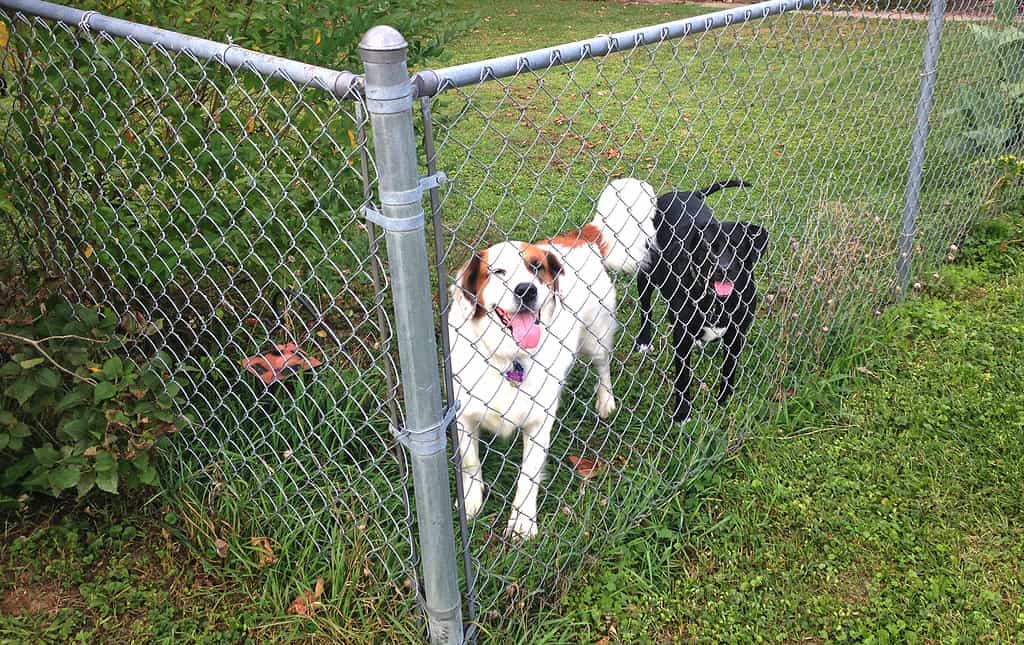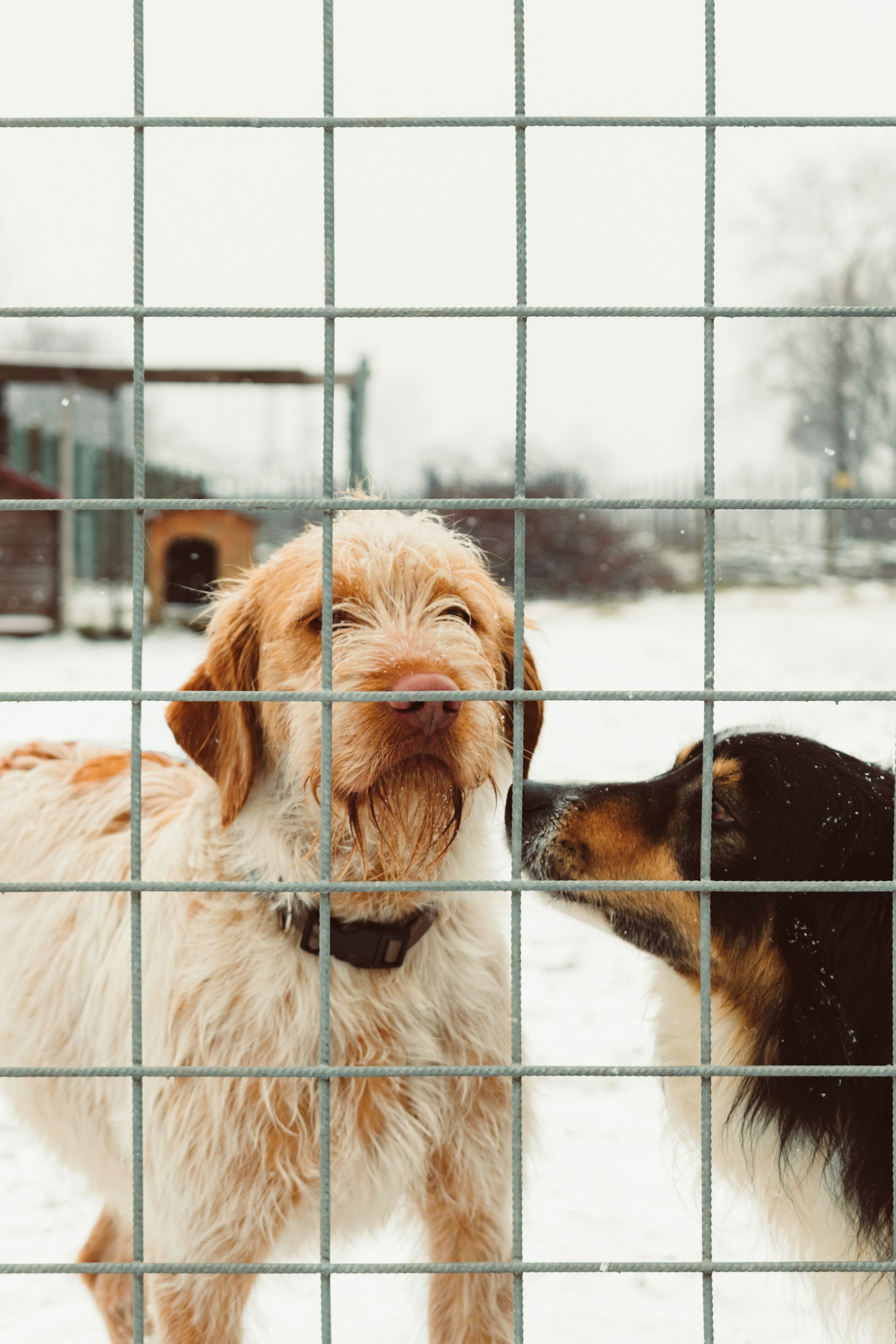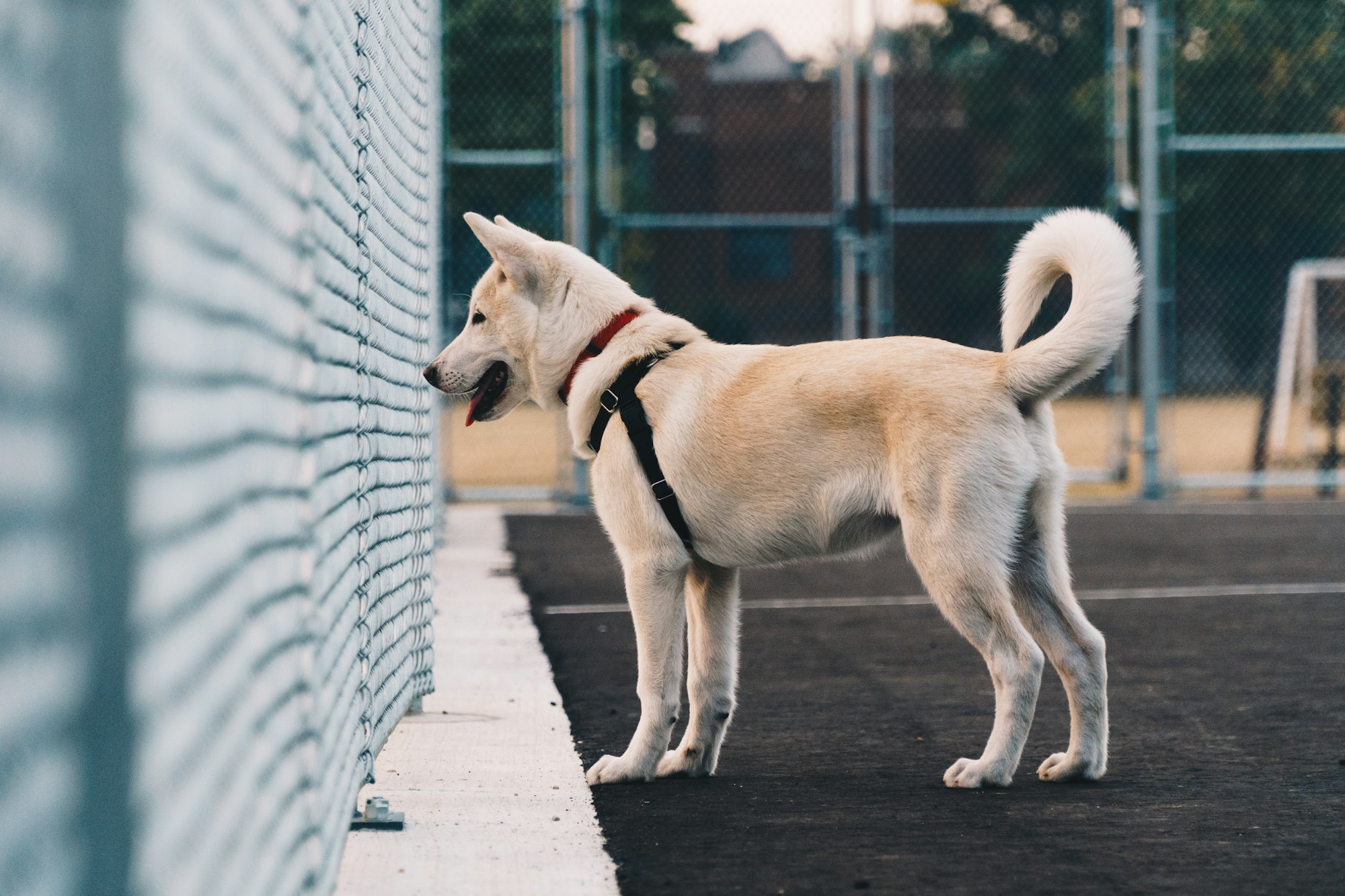Dogs are known for their high level of energy and their strong desire to mate. It's not uncommon for dogs to attempt to breed with other dogs they come across, even if separated by a fence. This raises the question: can dogs breed through a fence?

The answer is not a straightforward yes or no. It depends on several factors, including the size and strength of the fence, the breed and size of the dogs, and their level of motivation to mate. Some dogs may be able to jump over or dig under a fence to reach a potential mate, while others may be deterred by the barrier.
It's important for dog owners to be aware of the potential for breeding through a fence, as unwanted litters can result in overcrowding and health issues for both the mother and puppies. Additionally, aggressive behavior can sometimes occur during mating attempts, which can lead to injuries for both dogs. Understanding the risks and taking necessary precautions can help prevent unwanted breeding and promote the health and safety of dogs.

Understanding Canine Reproduction
Canine reproduction is a complex process that involves a number of factors, including the heat cycle in female dogs and the role of pheromones in dog mating. Understanding these factors is important for breeders, veterinarians, and pet owners alike.
The Heat Cycle in Female Dogs
The heat cycle, also known as estrus, is the period of time during which a female dog is fertile and able to mate. This cycle typically occurs every six months, although it can vary from dog to dog. During estrus, the female dog's body undergoes a number of changes, including an increase in estrogen levels and the development of follicles in the ovaries.
One of the most noticeable signs of the heat cycle is vaginal bleeding, which can last for up to three weeks. Other signs may include increased urination, restlessness, and a tendency to attract male dogs. It is important to note that female dogs should not be bred during their first heat cycle, as their bodies are not yet fully developed.
The Role of Pheromones in Dog Mating
Pheromones are chemicals that are produced by animals and can influence the behavior of other animals of the same species. In dogs, pheromones play an important role in mating behavior. Male dogs are able to detect the pheromones produced by female dogs in heat, which can lead to increased interest and attempts to mate.
However, it is important to note that pheromones alone are not enough for successful breeding. Male dogs must also be able to physically access the female dog, which may not be possible if they are separated by a fence or other barrier.
In conclusion, understanding the heat cycle and pheromones in canine reproduction is important for anyone involved in breeding or caring for dogs. By being aware of these factors, pet owners and breeders can make informed decisions about when and how to breed their dogs, while also ensuring the health and safety of all animals involved.
The Mechanics of Breeding
Breeding dogs is a complex process that involves several steps, including mating. Mating is the process by which male and female dogs come together to mate and produce offspring. However, when there is a physical barrier like a fence, it can be difficult for dogs to mate. In this section, we will explore the mechanics of breeding and how physical barriers can affect dog mating.
Mating Through a Fence Explained
Mating through a fence is a common occurrence among dogs that are kept in separate enclosures. It is a process by which male and female dogs attempt to mate through a physical barrier like a fence. However, it is important to note that mating through a fence is not a natural process and can be dangerous for the dogs involved.
When dogs attempt to mate through a fence, they are often unable to complete the mating process due to the physical barrier. This can lead to frustration and aggression, which can result in injury to the dogs involved. It is important for dog owners to understand the risks associated with mating through a fence and take steps to prevent it from happening.

Physical Barriers and Dog Mating
Physical barriers like fences can have a significant impact on dog mating. A solid barrier like a wall or fence can prevent dogs from seeing and smelling each other, which can reduce their desire to mate. Additionally, a solid barrier can make it difficult for dogs to mount each other, which can prevent them from completing the mating process.
On the other hand, a chain link fence or wire mesh can allow dogs to see and smell each other, which can increase their desire to mate. However, these types of barriers can still make it difficult for dogs to mount each other, which can prevent them from completing the mating process.
In conclusion, physical barriers like fences can have a significant impact on dog mating. While mating through a fence is possible, it is not a natural process and can be dangerous for the dogs involved. It is important for dog owners to take steps to prevent mating through a fence and provide a safe and secure environment for their dogs to mate.
Health and Safety Considerations
When it comes to breeding dogs through a fence, there are several health and safety considerations that should be taken into account. This section will cover the risks of unsupervised mating, injury prevention during breeding, and sexually transmitted diseases in dogs.
Risks of Unsupervised Mating
Unsupervised mating between dogs can lead to unintended breeding, which can result in an overpopulation of dogs. This can lead to behavioral issues, as well as health risks for the dogs involved. In addition, unsupervised mating can lead to injuries, both for the dogs and for people who may try to intervene.
Injury Prevention During Breeding
In order to prevent injuries during breeding, it is important to supervise the dogs and ensure that they are both healthy and physically capable of breeding. Dogs should be checked for any injuries or infections before breeding, and any issues should be addressed before the breeding takes place. In addition, it is important to provide a safe and secure environment for the dogs to mate in, such as a fenced-in area that is free from hazards.
Sexually Transmitted Diseases in Dogs
Just like humans, dogs can contract sexually transmitted diseases (STDs) through breeding. Some common STDs in dogs include brucellosis, kennel cough, and canine herpesvirus. It is important to have both dogs tested for STDs before breeding, and to take steps to prevent the spread of STDs during breeding. This may include using protective barriers or medications to prevent the spread of disease.
Overall, breeding dogs through a fence can be a safe and effective way to breed dogs, as long as proper health and safety considerations are taken into account. By supervising the dogs, preventing injuries, and taking steps to prevent the spread of disease, breeders can help ensure that their dogs stay healthy and happy throughout the breeding process.
Responsible Dog Ownership
Responsible dog ownership is crucial to ensure the well-being of your pet as well as the safety of other animals and people in your community. As a dog owner, it is your responsibility to take care of your pet's physical and emotional needs, and to prevent unwanted breeding.

Benefits of Spaying and Neutering
Spaying and neutering are effective ways to prevent unwanted breeding and improve your dog's health and behavior. Spaying involves removing the ovaries and uterus of female dogs, while neutering involves removing the testicles of male dogs. These procedures can reduce the risk of certain cancers and infections, and can also prevent behavioral problems such as aggression and roaming.
Managing Dogs in Heat
Female dogs go into heat approximately twice a year, during which they are receptive to mating and may attract male dogs. It is important to manage your dog during this time to prevent unwanted breeding. This can include keeping your dog indoors or in a secure area, supervising your dog when outside, and using effective training and commands such as "stay" and "sit" to keep your dog calm.
Effective Training and Commands
Effective training and commands are essential for responsible dog ownership. Teaching your dog basic commands such as "sit," "stay," and "come" can help prevent unwanted breeding and improve your dog's behavior. It is also important to intervene if your dog shows signs of aggression or other problematic behavior, and to seek professional help if necessary.
Overall, responsible dog ownership requires careful planning, supervision, and intervention to prevent unwanted breeding and ensure the well-being of your pet. By spaying or neutering your dog, managing your dog during heat, and using effective training and commands, you can help prevent negative consequences and promote responsible breeding practices.
Breeding and Containment Strategies
Designing an Effective Kennel or Enclosure
When it comes to breeding dogs, it is important to have a well-designed kennel or enclosure that provides adequate space and privacy. This not only ensures the comfort of the dogs but also helps to prevent unwanted pregnancies.
The kennel should be designed in a way that allows the dogs to settle and court each other without physical contact. It should also be spacious enough to accommodate the dogs comfortably, without promoting territorial behavior or dominance.
Types of Fences and Breeding Implications
Fencing is an important aspect of dog breeding, as it helps to prevent unwanted mating and genetic disorders. There are different types of fences available, each with its own benefits and implications.
Solid fences provide the most privacy and prevent physical contact between dogs, but they can also promote territorial behavior. Chain-link fences offer less privacy but allow for more socialization between dogs. Electric fences are also an option, but they require training and may not be suitable for all dogs.
It is important to choose the right type of fence based on the breed and temperament of the dogs, as well as the breeding goals. By designing an effective kennel and choosing the right type of fence, dog breeders can ensure a safe and successful breeding process.

Frequently Asked Questions
- Q1: Is it possible for dogs to mate without direct contact?
- No, dogs require direct physical contact to mate and conceive. The male dog must mount the female and penetrate her vagina to deposit semen, which contains sperm, into her reproductive tract.
- Q2: What conditions are necessary for dogs to mate successfully?
- Dogs must be sexually mature and in heat for mating to occur. The female dog's reproductive system must be receptive to the male's sperm, and both dogs must be physically healthy and able to engage in mating behavior.
- Q3: Can physical barriers like crates or cages prevent dogs from breeding?
- Yes, physical barriers like crates or cages can prevent dogs from mating. However, fences or other barriers that do not completely separate the dogs may not be effective in preventing mating.
- Q4: What is the likelihood of pregnancy in dogs after mating occurs?
- The likelihood of pregnancy in dogs after mating occurs depends on various factors, such as the timing of mating during the female's heat cycle and the quality and quantity of the male's sperm. However, pregnancy is possible if mating occurs during the female's fertile period.
- Q5: Do dogs require a physical connection to conceive during breeding?
- Yes, dogs require a physical connection to conceive during breeding. The male's sperm must come into contact with the female's egg for fertilization to occur and pregnancy to result.
- Q6: How tall must a barrier be to prevent dogs from mating?
- The height of a barrier needed to prevent dogs from mating depends on the size and breed of the dogs. A barrier that is too low or easily climbed over may not be effective in preventing mating. It is recommended to consult with a professional to determine the appropriate height for a barrier.




